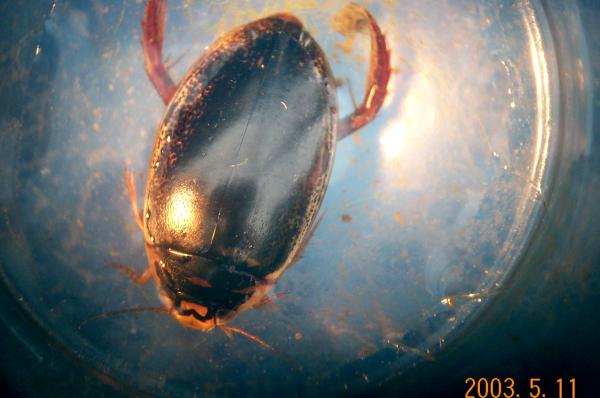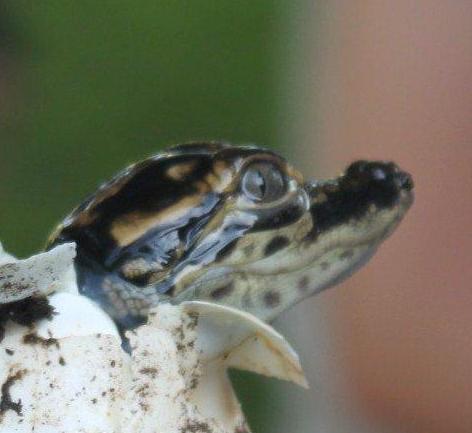|

Predaceous Diving Beetle Adult (Dytiscidae) 7 mm long.
|
|
Predaceous diving beetles vary greatly in size. The one
photographed at the left was about ¼ of an inch long. Other
species can get up to 1 ½ inches long.
As their name implies, they are hunters. In some species, the
tarsi of the forelegs grows twisted to make raptorial claws. They
feed upon just about anything they can catch, including small fish
and tadpoles.
They breath through 2 openings at the end of their abdomen, and
must come to the surface for air. They can carry some air under
their wings in the form of a small bubble.
|


